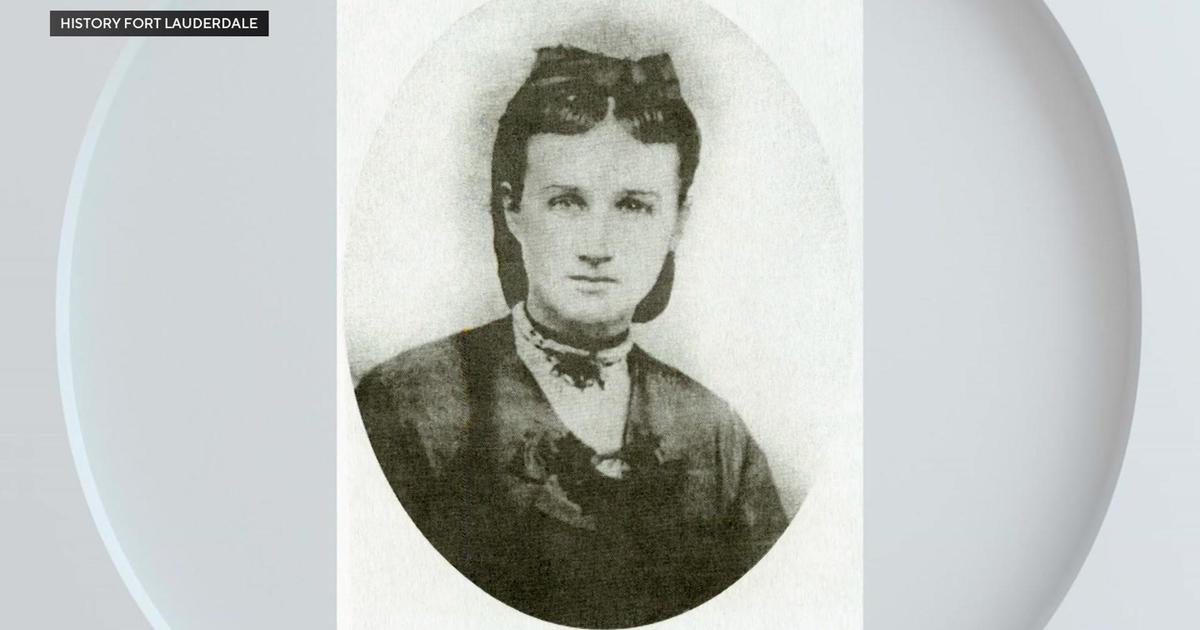Who was Mary Brickell? The other “mother” of Miami

MIAMI – A legend that has almost become a fact is that Julia Tuttle is the “Mother of Miami.” She is often credited as the first woman to found a major American city.
As the story goes, Tuttle, a Miami landowner, persuaded railroad baron Henry Flagler to extend his railroad to Miami.
According to the legend, after a major freeze in north Florida in 1895, Tuttle, to back up an intensive letter writing campaign, sent Flagler a clutch of orange blossoms to prove South Florida was frost-free. Hence in popular history, Tuttle gets the credit for being the woman who founded Miami. She has a causeway named after her, a statue in Miami’s Bayfront Park, and she is in all the history books.
That’s Julia but what about Mary? Mary Brickell.
Those who have studied the life of Mary Brickell, including her great-granddaughter, agree she probably did not mix well with the then-traditional turn of the 20th-century Miami society. She likely did not dwell on small talk. Along the way, she was compassionate and supportive of Black laborers and Seminole Indians, which was not a popular pursuit at the time. Being English-born and a bit of an outsider was probably why she was not given the credit she deserved in the development of the City of Miami.
So should she be the “Co-Mother of Miami” along with Tuttle?
Historian and author Cesar Becerra said that “there is overwhelming evidence that Mary was a main shaker in the birth of the city.” His book “Orange Blossom 2.0” makes a case for Mary Brickell.
“You can’t remove Mary from the birth story of Miami,” he said.
Recently CBS News Miami’s Hank Tester met with Mary Brickell’s great-granddaughter who spoke during a lecture series at the University of Miami.
“I have nothing against Julia Tuttle but I think Mary’s work during her lifetime far exceeded what Julia Tuttle did,” said Bea Brickell.
So there you go. Mary Brickell, English-born and Australian-reared, met and married American entrepreneur William Brickell in a small rough and tumble Australian gold mining camp. Members of the Albury & District Historical Society in Albury, Australia have documented how William Brickell and a partner opened businesses, built a hotel, and financed and built a critical bridge with Mary at his side.
“I think that was like a boot camp for Miami. Miami was a wilderness when they came here,” Bea Brickell said.
The Brickells arrived at the mouth of the Miami River in 1871 after acquiring over two thousand acres of land along the river and another large parcel along the New River which is now part of Fort Lauderdale.
According to Becerra, on the south side of the Miami River the Brickells established, “the first post office, the first bank, the first store.” It was the store, which also served as a trading post, that allowed Mary to build trust with the Seminoles. It later helped Black laborers by lending them money and providing them mortgages for land and homes. The Brickell’s trading post early on seems to have been the social and business hub of the small hamlet.
In 1922, the Miami Herald published this story:
January 14, 1922
“The Brickell’s were land rich but also had cash on hand to lend to those in need. Mary provided loans to people who didn’t drink and were of high character. During a time of segregation and bigotry in Miami, she would lend money to black people and Seminoles. She was revered in both communities for her generosity, trust and kindness.”
The day following her death, an article was written in the Miami Herald by leaders of the Black community to express their feeling of loss. The article conveyed their condolences to the family. In addition, they thanked Mary for her help in allowing the community to become property owners and better citizens.
“She would make it a point to ask “How are you living?” to folks in disadvantaged communities. Mary Brickell was genuinely concerned about the welfare of all Miami residents. Her passing in 1922 represented more than the death of a pioneer. It also marked the loss of an important citizen to all of Miami.”
“I don’t see that she saw people because of their color. She wanted to be fair the best way she could,” said Bea Brickell.
Now back to the legend for a second. Julia Tuttle is credited with, in the wake of a major freeze in northern Florida, sending Orange blossoms to Henry Flagler to back her letter-writing crusade urging him to extend his railroad into Miami. Flagler did extend his tracks to Miami and Julia got the credit.
The revisionist story is Tuttle never sent orange blossoms to Flagler. It was a Flagler manager who took cuttings from fruit trees to the railroad baron who always had designs on taking the railroad to Miami and beyond, but he needed land for a right of away. Mary and William Brickell had plenty of it in Flagler’s way and so did Julia Tuttle. So, Flagler needed to deal with the Brickells and Julia Tuttle.
According to Becerra, a Flagler agent “brought Flagler two contracts. One from Julia Tuttle and one from William and Mary Brickell.” He notes in his book that Flagler signed with the Brickells four months before he signed with Tuttle.
It was Mary Brickell who did the business deals, the negations, as William had put all the property in her name.
“She really had a vision. More than a vision. She actually made it work and that’s pretty impressive,” said Bea Brickell.
In 1898, Tuttle died six years after arriving in Miami, two years after Flagler’s railroad arrived. Mary Brickell lived for another 24 years and along the way was instrumental in the layout of the City of Miami. The Brickell land on the south side of the Miami River became Millionaire’s Row with wide tree-lined streets. Eventually, the mansions were replaced by today’s skyscraper condos and office buildings.
Mary Brickell’s vision for the Brickell hammock, located west of downtown Miami and now called “The Roads,” was wide streets, traffic roundabout, and pedestrian friendly. It drew huge crowds when the lots were put up for auction. Today “The Roads” is a most sought after neighborhood.
Becerra and Bea Brickell hope that someday Mary Brickell will get equal billing in the birth of Miami story, maybe as “Co-Mother of Miami.”
“I think she was a woman who was totally focused on making Miami into a wonderful place. I think her story is a good one and I think it will be an inspiration for people today especially women,” said Brickell.


